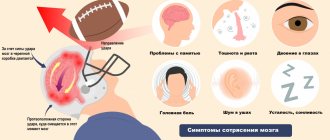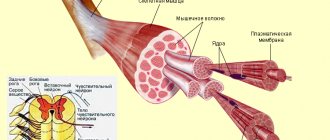A verticalizer is a device that can be used independently or in addition to other rehabilitation means. Designed to support the body in an upright position for people with limited mobility. The main purpose is to prevent and mitigate the negative consequences of a sedentary or recumbent lifestyle, such as bedsores, renal and pulmonary failure, and osteoporosis.
In this article, special attention will be paid to the features of verticalizers for children with cerebral palsy.
Existing types of verticalizers
Let's look at the types of verticalizers on the market.
A device in which the patient has support on the stomach is especially common and is called anterior. Designed for patients without problems with holding their head.
The second type is intended for people with a weakened spine and severe disorders of the musculoskeletal system. The verticalizer with reverse support (rear) is additionally equipped with a mechanism for gradually moving a person from a lying position to a vertical one.
Multi-level devices allow the patient to occupy several positions - sitting, upright, lying down, without changing the rehabilitation device.
Static verticalizers are intended for those unable to move independently. Equipped with wheels designed to help caregivers move short distances in an upright position.
Mobile, on the contrary, is designed for independent movement in a standing position.
The mobile verticalizer allows you not only to move, but also to train your leg muscles by moving levers with your hands, which are mechanically connected to your feet.
Purpose of the device
According to numerous studies by therapists, the use of verticalizers by people with disabilities has a positive effect on their physical and psychological condition.
If you follow the rules for operating the equipment, a person develops normal posture. Thanks to this, key body functions are supported: breathing, digestion, lymph and blood circulation, thermoregulation. Using a verticalizer, a person can significantly improve their quality of life and expand their motor capabilities. With regular use of this device you can prevent:
- muscle atrophy;
- fractures due to decreased bone density;
- the appearance of blood clots;
- formation of bedsores;
- development of pulmonary or renal failure.
The verticalizer promotes the formation of movement and balance skills, improves blood circulation in the lower extremities, reduces pressure on the skin and sacrum.
It is worth noting that the use of such equipment allows you to increase bone density, stretch muscles, thereby preventing contractures.
Correct selection of device
Only a specialist doctor can give the correct recommendations on choosing a verticalizer. To do this, the patient must undergo an examination, which will allow the doctor to identify underlying diseases, determine the type of device and level of body fixation, physical capabilities and permissible loads.
If possible, the patient should also participate in the choice of the device, because only he can determine the degree of comfort of the proposed device. However, the main criteria should be the doctor’s recommendations, since the device is intended to correct existing problems, and this may cause additional discomfort.
Types of verticalizers for adults
Standers intended for use by disabled adults are of 5 types:
- dynamic - used as a means of transportation, controlled by the patient himself, who has the ability to move the wheels of the device with his hands;
- static – intended for people with severe motor impairments; controlled by doctors using a remote control;
- anterior – suitable for patients who are able to hold their head up; the support is on the stomach;
- rear – support occurs on the back; prescribed to those who cannot hold their head up;
- multi-level - means of bringing the body into several positions at once: lying, sitting, semi-sitting, standing.
Some verticalizers are used as leg trainers. When making movements with your arms, levers are pulled that act on the platforms under your feet, thereby training your lower limbs.
Correct size choice
The following parameters can help you select the device size:
- weight and height,
- foot length,
- hip width,
- chest volume,
- the distance from the foot to the shin and from the shin to the thigh on both legs.
It is also important to measure the distance from the foot to the chest. All measurements should be taken in clothes that are comfortable for the patient and usual shoes. If a child wears special orthopedic shoes, then measurements and fittings should be made in them. How to take measurements correctly, you should consult with your doctor, who will help determine possible measurement difficulties.
Important to remember!
Before each use, you should carefully check the serviceability of all clamps, as well as the reliability of the brakes.
The greater the angle of inclination of the verticalizer, the greater the load on the legs and spine. That is why it is unacceptable to start training immediately from 90°, and the time of the first training should not exceed 2-3 minutes.
The verticalizer is installed only on a horizontal surface without possible inclinations. If the device is not intended to be used, it must be put on the brake.
Features of using verticalizers
When using a verticalizer, it is important, first of all, to remember the general principle of distributing the load on the body. The load on the spine and hip joint is directly dependent on the angle of inclination of the verticalizer stand. The more the angle of inclination approaches 90 degrees, the greater the load level. In an absolutely vertical position, maximum stretching of the spinal column is achieved, and a load equal to the patient’s weight is placed on the legs. It is especially important to remember this when using verticalizers for children with cerebral palsy.
Any type of verticalizer must be located on a strictly horizontal surface. The parking brake of the verticalizer must always be locked - the verticalizer can only be removed from the brake to move it. All fixing belts provided by the verticalizer design must be fastened. Before each use, the verticalizer should be checked for damage.
Standing machines for children with cerebral palsy
On average, children stand on their feet at about 10 months, so at this time (in no case earlier) you should begin to accustom a child with cerebral palsy to an upright position. However, before using the verticalizer, parents should definitely consult with their doctor. It is important to remember that while in the verticalizing device, the child practically does not move (especially with a high level of fixation), so the period of stay in the verticalizing device should be limited to 20-30 minutes a day (unless there are special recommendations from a doctor in this regard). If the verticalizer is used to prevent contractures, and the child has to spend a lot of time in it every day, in this case the verticalizer must be portable and must be equipped with a table with the ability to change the height and angle of inclination and with a limiting edge. If a child suffers from epilepsy, all hard parts of the verticalizer should be upholstered with soft material.
If there is asymmetry of the pelvis, it is necessary to equip the verticalizer with an additional rigid device that fixes this area. If there is a need to put a child in orthopedic shoes, then the verticalizer should have wider cups for the feet. If a child has an insufficient level of control over body position, then it is necessary to equip the verticalizer with a torso clamp, a head restraint and devices for fixing the hands on the table.
Correction of the position of the pelvis and lower extremities should occur gradually. First, let the child stand for a while in the verticalizer, then after a short amount of time the tension in his muscles will weaken a little, and everything can be corrected again. If the child is immediately fixed in the position of maximum correction, this can lead to muscle stretching and increased muscle tone.
Standers for adults
When using a verticalizer to rise from a sitting position without a seat, you first need to get as close to the verticalizer as possible. Then put the front wheels of the wheelchair on the brakes and place your feet on the footrest of the verticalizer (in the so-called sandals) and secure them with straps. In this case, the knees should rest against the knee pads. The lifting belt is located under the buttocks and is attached to the verticalizer. It is important that the belt is not placed too high or too low to ensure safe lifting.
When using a verticalizer with a seat, it is necessary to properly adjust the seat parameters, since the effectiveness of verticalization and patient safety depend on this. The distance from the patient’s knees on the inside to the edge of the seat should be such that one finger can fit freely (but no more!). The height of the seat and the position of the sandals should be adjusted so that the patient's knees are level with his hips and his legs are at right angles.
If the knees are too high or too low, the knee pads will be either above or below the knees when moving to a vertical position, and they must completely surround the kneecap to effectively support the patient. In this case, the knee pads should fit tightly to the leg, but not squeeze it, so as not to disrupt blood circulation.
During the first 2-3 verticalization sessions, the patient must constantly be in someone's presence. He needs to measure the pressure and, at the slightest dizziness, bring him first to a sitting position, then to a lying position. Particular care should be taken when verticalizing patients with contractures of the joints of the lower extremities and skeletal deformities. In this case, complete verticalization is excluded, and the angle of permissible inclination of the verticalizer stand (necessarily with reverse support) is determined by doctors individually. The time spent in a vertical position is determined individually. In general, doctors do not recommend staying in a verticalizer for more than 4 hours a day, and verticalization sessions should begin with 3-5 minutes.
Thematic dictionary
Children's verticalizers for patients with cerebral palsy
Since the child will spend a lot of time in this device in the future, the choice should fall on verticalizer supports for children with cerebral palsy, equipped with tables with limiting sides, with the ability to change the angle of the table.
If a child experiences epileptic seizures or develops convulsive readiness, it is worth softening all hard edges with dense material.
It is worth noting that a large number of models of verticalizers have been produced for children suffering from cerebral palsy. Some manufacturers give their product the appearance of an animal, a car, a dinosaur, so that the treatment of a small patient takes on an element of play. If you have the funds, there will be no problems in choosing.
Making a verticalizer yourself
Scheme for manufacturing a device for children with cerebral palsy
The fairly high price of such devices makes them inaccessible to many young patients. At the same time, simple modifications, for example, a vertical table, can be made with your own hands.
To make such a device with your own hands you will need a minimum of tools and skills.
Before you start making it yourself, you should consult a doctor who will tell you what functions the device should perform in your case.
Perhaps the most affordable option would be a product made of wood. If you have the skills of a welder and a welding machine, you can use a metal structure.
Before starting to do the work yourself, it will be useful to familiarize yourself with similar models, study their features, and read reviews.
Stander Shifu Ocean
For example, the Shifu Ocean verticalizer for children with cerebral palsy is a combined device in which a sick child can be restrained either with the emphasis on the stomach or with the support on the back. In addition, it has several stages of fixation adjustment, as well as a soft orthopedic base, which makes the device additionally comfortable.
This device has a removable table that can be attached to both the front and rear. Its position can also be adapted to the different needs of the child using special regulators.
This line of products for children provides three sizes, taking into account the height of the patient.
How to choose
There is a wide variety of verticalizers that differ from each other in functionality, design and price. The simplest ones in terms of functionality, for example, a verticalizer table, provide a smooth rise from a horizontal to a vertical position. In appearance, they resemble a table that can be used for massage. A verticalizer table is suitable for traction of the spine, which is necessary in a number of cases. It is equipped with various accessories, including a removable adjustable table that allows you to place various objects on it.
More complex designs provide for a variety of different adjustments that provide comfortable fixation for a disabled child with cerebral palsy and give the body different orientations in space.
This helps the development and proper functioning of the vestibular apparatus in a disabled person with cerebral palsy, promotes normal blood circulation, and eliminates the formation of bedsores, which cannot be avoided with a constant lying position. The child acquires basic motor skills and learns to use objects while in an upright position.
But, most importantly, these devices contribute to the social adaptation of a patient with cerebral palsy. The baby gains, although limited, freedom of movement, has the opportunity to play using toys and a table, and eat food independently.
Let's consider several popular models. We can mention the Squiggles verticalizer, Shifu Ocean verticalizer, Kitten 2 verticalizer, R82 Gazelle, Dino verticalizer, X-tend.
The Shifu Ocean verticalizer is a combined type device that allows you to fix a disabled child with cerebral palsy with emphasis on the back or stomach. Has height adjustment of the headrest. The soft orthopedic base and the presence of several stages of adjustment in the pelvic and leg clamps ensure comfortable placement of a child with cerebral palsy.
The Shifu Ocean verticalizer is equipped with a removable table that can be placed in front or behind the device. The table is equipped with several adjustments, which allows you to adapt it to perform different tasks.
This useful device is available in three sizes, depending on the height of the baby. The Dino verticalizer provides reliable and comfortable fixation of a disabled child with cerebral palsy in three main positions: lying, sitting and standing. It is made of environmentally friendly material (wood) and has several stages of adjustment, allowing you to give the child’s body the required position. The headrest is adjustable in height and width, providing head support if the baby does not hold his head well.
The R82 Gazelle model is a device that can be used for posterior or anterior fixation (with emphasis on the back or abdomen) of a disabled child with cerebral palsy. Equipped with an adjustable table. The advantage of this R82 Gazelle model is that it can be easily folded, which makes transportation and storage easier.
The R82 Gazelle model is available in three sizes, which allows you to take into account the height and age of the baby.
Another interesting model is the X-tend. It is produced by the Italian company Fumagalli. Its special feature is the presence of a leg abduction function, which ensures the correct positioning of the femoral head in the hip joint. Precise and numerous adjustments of the X-tend model ensure that this device adapts to the changing needs of the child. This model is available in two sizes. The first size is suitable for children from two to eight years old, the second from seven to fourteen. Unfortunately, this model does not come with a table and must be purchased separately.
All of the models mentioned have wheels that make them easy to move indoors. To do this, it is necessary to remove from the floor all objects that impede movement (rugs, rugs, etc.). When choosing a device, you need to make sure that its dimensions do not exceed the width of the doorway and that it can move freely everywhere.
The main criterion that parents must follow before purchasing any device model is the doctor’s recommendations. Only he will tell you what type the model should be and what functions it should have.
Stander Robin
Robin devices are rear-supporting verticalizers for children with cerebral palsy and are available in two sizes for age categories 3-14 years. It is considered a compact device suitable for the rehabilitation of children with cerebral palsy. It has several supports, which, thanks to their ergonomic shapes, allow you to surround the child with an individual comfortable frame on all sides and give the body a stable vertical position. The support frame is equipped with tilt angle adjustment.
At the bottom of the device there are sandals with fasteners, the angle of which can be adjusted according to the physiological characteristics of the small patient. With the help of a low footrest, the stroller quickly becomes a verticalizer for children with cerebral palsy. If a child is unable to control his body or suffers from seizures, a strong, wide belt is provided for him.
The Robin verticalizer for children with cerebral palsy is characterized by quick and easy adjustment. It folds up effortlessly and stores compactly. The package does not include a removable table; it must be purchased separately.
Which verticalizer to choose for children with cerebral palsy
A verticalizer for children with cerebral palsy is a design that will allow a child to stand without assistance. When choosing a specific model, you need to take into account the specifics of the child’s condition, so before purchasing a device, you need to consult a doctor who will help you choose the best option.
Currently, there are many models that differ in size and fixation methods. Cerebral palsy is often aggravated by epilepsy, and in order for the child not to injure himself, the structure must be very stable, and all parts must be covered with soft upholstery.
How to make a verticalizer with your own hands
Despite all the positive aspects of this device, it has a significant drawback - the price. New verticalizers for children with cerebral palsy cost from 25,000 rubles, many, slightly more equipped, cross the threshold of 100,000 rubles. You can purchase the unit secondhand after your child has grown out of the device, but it is worth noting that each patient with cerebral palsy has its own specific deviations; you will have to search for a very long time or take what you have and adjust it to your size.
Or you can immediately decide and make a verticalizer for a child with cerebral palsy with your own hands. However, you will still have to spend money on materials and professional engineering drawings.
However, these costs will still be several times less than purchasing a ready-made device. First, decide what material the support will be made of. Based on the selected material, contact an engineer who will prepare a professional drawing of the device according to individual measurements. Next, you should consult a doctor for possible amendments and recommendations that will be given according to the physiological characteristics of the child.
If you have the skills to work with the selected material, you can begin self-assembly. If you don’t have such skills, you should contact a specialist.
Don’t forget that in addition to the verticalizer itself, a child with cerebral palsy needs softening covering and adjustable clamps. For this work it is also worth using high-quality material that will not create additional problems. The covering should not be too soft, and the fastening belts should not be rigid. Foam rubber and cotton wool are not recommended in this case, as is polyurethane foam, although these are the cheapest materials used in orthopedic mattresses. Cotton wool tends to fall off, foam rubber crumbles and deforms, polyurethane foam absorbs moisture, but drying it is almost impossible.
A more or less suitable material - both in terms of properties and budget restrictions - is latex. For cladding it is also worth choosing a hypoallergenic material. It should be strong enough, but not rough in structure. You can use cotton teak. Belts can be purchased as a set from medical supplies or assembled yourself. As a rule, they are made using cordo-nylon tape, which can be purchased at a hardware store or sewing store. They are fastened to each other with special fasteners of suitable size.
Photos of verticalizers for children with cerebral palsy are presented in this article.










